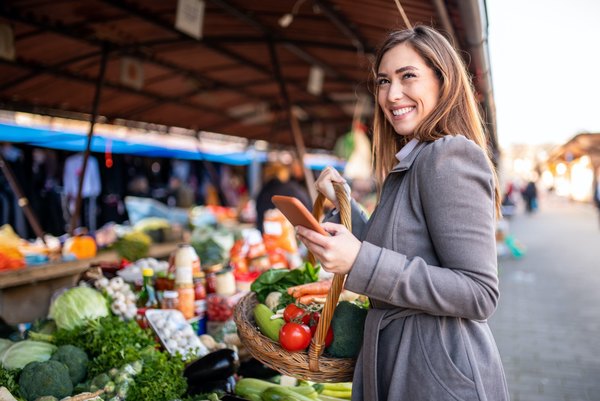Saving a few dollars on each trip to the grocery store can add up, and can be done with just a few simple tricks.
The average American household spends between $314 and $516 on groceries each month. It may not seem like a lot, but over the course of a year it adds up to thousands of dollars.
It's definitely a better option, financially speaking, than takeout or dining out – but there's a wide range of choices as you walk down the aisle.
There are a few things you can do to save more money on groceries, leaving you with a bigger budget to spend on other things.
Pay with Cash
If you're on a budget, going to the grocery store with cash instead of a credit or debit card will make it very difficult to spend more money than you plan. Spur-of-the-moment purchases are much less likely when you've got a hard limit to how much you can spend, and will make you more carefully consider how important the brand-name pasta is over the store brand that's half the price.
Make a habit of creating a shopping list, estimating how much you'll spend, and withdrawing that amount before you head to the store.
Download the Right Apps
Nowadays there are apps for everything, including saving money on groceries. A few useful examples are:
- Fetch Rewards and Checkout51 will reward you with points for scanning your grocery store receipts
- Coupons.com lets you access free grocery coupons
Ask For A Rain Check
If you're trying to save money on groceries, it can be frustrating when you find a great deal but the store has sold out of the sale product. Head to customer service and ask for a rain check – they'll give you a voucher you can use in the future to get the sale discount when the item is back in stock.
Getting rain checks can be particularly useful for everyday items like olive oil or toilet paper, so remember to ask if that is a possibility.
Ignore the Eye-Level Shelves
The first products you look at when you're at a grocery store are the ones that are at your eye level – and those brands have literally paid a premium to be there. On average, this means they are also more expensive.
Don't fall into the trap – scan up and down the aisle, and you'll often find more affordable versions of the same products.
Visit Ethnic Foods Stores
When shopping for universal items such as spices, lentils, rice, beans, and even tortillas, head to ethnic foods stores (or the "ethnic foods" aisle in the grocery store). In many cases, the same products you'll find elsewhere can be as much as 75% cheaper.
Bring Your Own Bags
An increasing number of states have banned single-use plastic bags, which means you're expected to do this, but in many states, you can get a discount if you bring your own bags. Even without the environmental reasons to do this, there is a financial benefit to bringing your own bags – many stores will give you a discount for carrying a reusable bag. For example, Whole Foods will credit 10¢ per bag to your bill.
Visit The Farmer's Market
When it comes to fresh produce, it's hard to beat the prices you'll find at the farmer's market. You'll save money, eat healthier, and help local family farmers. Many cities have indoor farmer's markets that operate year-round. Search online to find farmers markets near you.






